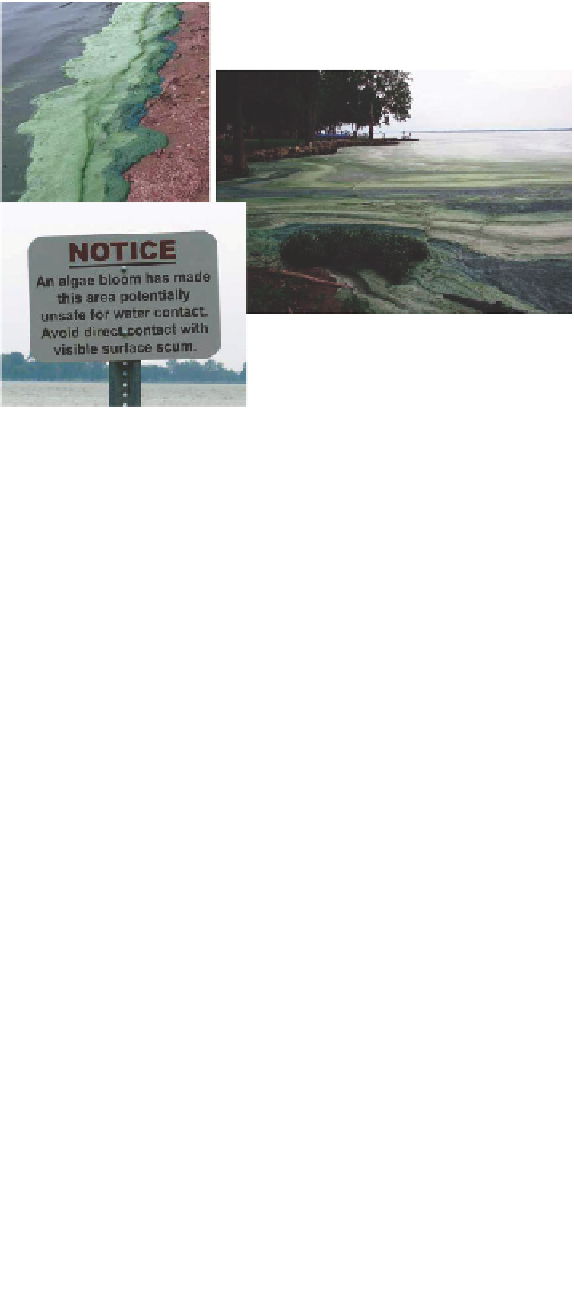Environmental Engineering Reference
In-Depth Information
Algae bloom on Grand Lake St. Marys We st
Beach on June 23, 2010
Grand Lake St. Marys June 2010 algal bloom
We st Beach recreational restrictions imposed on
Grand Lake St. Marys users on June 23, 2010
FIGURE 15.11
Cyanobacterial algal bloom and lake in Grand Lake St. Marys in western Ohio, 2010. (From
Davenport, T. and Drake, W.,
LakeLine
, Fall, 41-46, 2011. Courtesy of the North American Lake Management
Society. With permission.)
the growth of other algae (which may be more palatable to zooplankton and better support overall
productivity). In addition, Cyanobacteria may produce toxins. The
Lyngbya
species produce a toxin
that results in what is known as “swimmer's itch” or cyanobacterial dermatitis. Three of the most
common and problematic organisms are in the genera
Anabaena
,
Aphanizomenon
, and
Microcystis
.
For example, the Cyanobacteria of the genus
Microcystis
releases the hepatotoxin microcystin
(Brittain et al. 2000; Vanderploeg et al. 2001), which is extremely toxic, causing death in livestock
and human health problems. The toxicity of three blue-green algae toxins (anatoxin, microcystin,
and aphantoxin) is compared to that of one of the deadly groups of mushrooms and the toxicity of
cobra venom in Table 15.2.
The World Health Organization established a recommended limit of 1 μg L−1 for drinking water
(Brittain et al. 2000; Vanderploeg et al. 2001), which can be exceeded many times in HABs. The
TABLE 15.2
Comparison of Toxicities of Three Cyanobacterial Toxins
Toxin
Source
LD50 (
μ
g kg
-1
)
Muscarine
Amanita
mushroom
1100
Anatoxin
Anabaena
250
Microcystin
Microcystis
60
Neurotoxin
Cobra venom
20
Aphantoxin
Aphanizomenon
10
Source:
Smith, V.H., Blue green algae in eutrophic fresh waters,
LakeLine
,
Spring, 34-37, 2001.
Note:
LD50 is the dose required to kill 50% of laboratory animals receiving
the toxin.

Search WWH ::

Custom Search